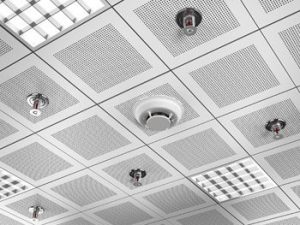10 Inspection and Maintenance Tips for your Fire Sprinkler System in Winter and Cold Weather
Upgrading the commercial property gives it a new lease on life
November 5, 2018Protect Yourself as a Landlord – What do I do if someone is injured?
July 16, 201910 Inspection and Maintenance Tips for your Fire Sprinkler System in Winter and Cold Weather
Maintenance Tips for your Fire Sprinkler System in Winter
It’s important to have a robust and active inspection, testing and maintenance program for your fire sprinkler system and other suppression systems. This is not only a best practice but is also the owners responsibility to maintain these systems to comply with the Ontario Fire Code.

Ensure that your Fire Sprinkler System is properly maintained
As part of your ongoing inspection, testing and maintenance program we recommend the following ten tips that you should consider for maintaining your systems in winter and colder months to help ensure the longevity of your system, prevent any possible freeze ups, and to ensure your system remains in the proper operating condition.
10 Maintenance Tips for your Fire Sprinkler System in Winter
- Use a reputable contractor who utilizes certified and qualified installers. Individuals who are conducting hands on installations, testing, repairs and inspections on sprinkler systems and other suppression systems must be properly qualified, and must be in possession of their Certificate of Qualification for the Sprinkler System Installer Trade issued by the Province of Ontario either by the Ministry of Colleges & Universities or by the Ontario College of Trades. Owner and or owner representatives can validate this certification through the government website and current registry at the College of Trades.
- Make sure you have a clear and concise Inspection, Testing & Maintenance contract with the contractor who is providing the inspection, testing and maintenance services. It is recommended that agreed upon contract clearly details what maintenance, testing and inspection services are being offered and under what time frequencies these services will be completed. Furthermore, it is recommended that the inspection and maintenance contract follow the recommendations and guidelines found in the NFPA 25 “Standard for the Inspection, Testing, and Maintenance of Water-Based Fire Protection Systems” which provides the minimum requirements for periodic inspection, testing and maintenance of water based fire protection systems and the actions to undertake when changes in occupancy, use, process, materials, hazard or water supply that potentially impact the performance of the water based system are planned or identified. Your insurance provider may offer discounts or better rates if you can document and demonstrate that your inspection, testing and maintenance program complies with the NFPA 25 requirements. To view the NFPA 25 NFPA standard .
- Ensure that all fire hydrants, emergency exits and the area around your Fire Department Connection are cleared of all snow to permit emergency access in the event of a fire.
- Schedule your qualified fire sprinkler contractor and certified sprinkler system installer today for an inspection: Visual inspection and check for corroded or leaking parts. An inspection by a qualified fire protection professional can help identify physical deficiencies. A professional inspection will also keep you in compliance with all local fire protection applicable code.
- Have a certified sprinkler system installer perform a main drain test: Main drain test will make sure that there are no valves shut on your water supply.
- Inspect heating systems to make sure they are in working order.
- Drain the Low Point Drains: Regardless of the type of suppression system you have, if your system has low points, make sure you drain them. This will help prevent low lying water in the piping freezing in cold climates and potentially causing damage and possible leaks.
- Keep Cold Air Out: Broken windows, thin insulation, cracked walls, and exposed roof areas are a few examples from where cold air can enter and freeze the system. Keep the doors, and windows shut when not in use and protect the system adequately from harsh weather conditions. As mentioned above, maintain the temperature of 4°C and above around your fire suppression system and its pipes.
- If you have unheated areas in your building (unheated parking garages, attic spaces, cold storage areas, etc.) it is commonly protected with an antifreeze system. It’s important to conduct and verify an antifreeze system concentration test: This is to make sure water and antifreeze levels is at a level to prevent freezing. Also have your certified sprinkler system installer verify that your antifreeze system is compliant with the new requirements found in the appropriate NFPA standards. For more information, visit the NFPA website .
- Heat trace and insulation systems are in working order: Inspect that heat trace is connected to alarm panel and functioning, verify insulation is not damaged and positioned correctly.
Our sincere thanks to our friends at CASA that have offered this valuable advice.
About CASA
The Canadian Automatic Sprinkler Association is a National Trade Contractor’s Association. It has existed in one form or another since the 1920’s, and was incorporated under a Dominion Charter in 1961. CASA promotes, defends, enhances and improves the business designing, installing and manufacturing fire sprinkler devices and systems. The Association works closely with the fire and building officials, architects and others “To enhance the level of life safety and property conservation from the effects of fire through the use of fire sprinklers”.
CASA offers technical support as well as offers Educational Seminars as part of our mission to further advance and support the Canadian Fire Sprinkler Industry. For more information on our upcoming online and educational seminars please visit our website .
